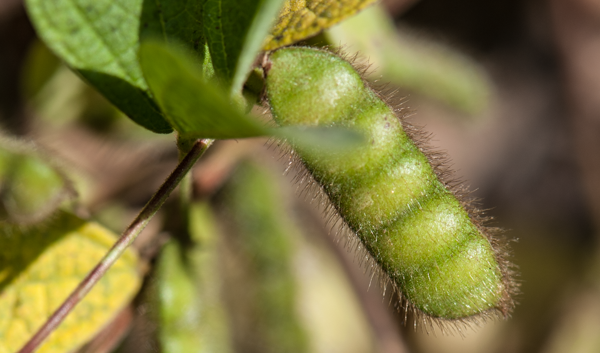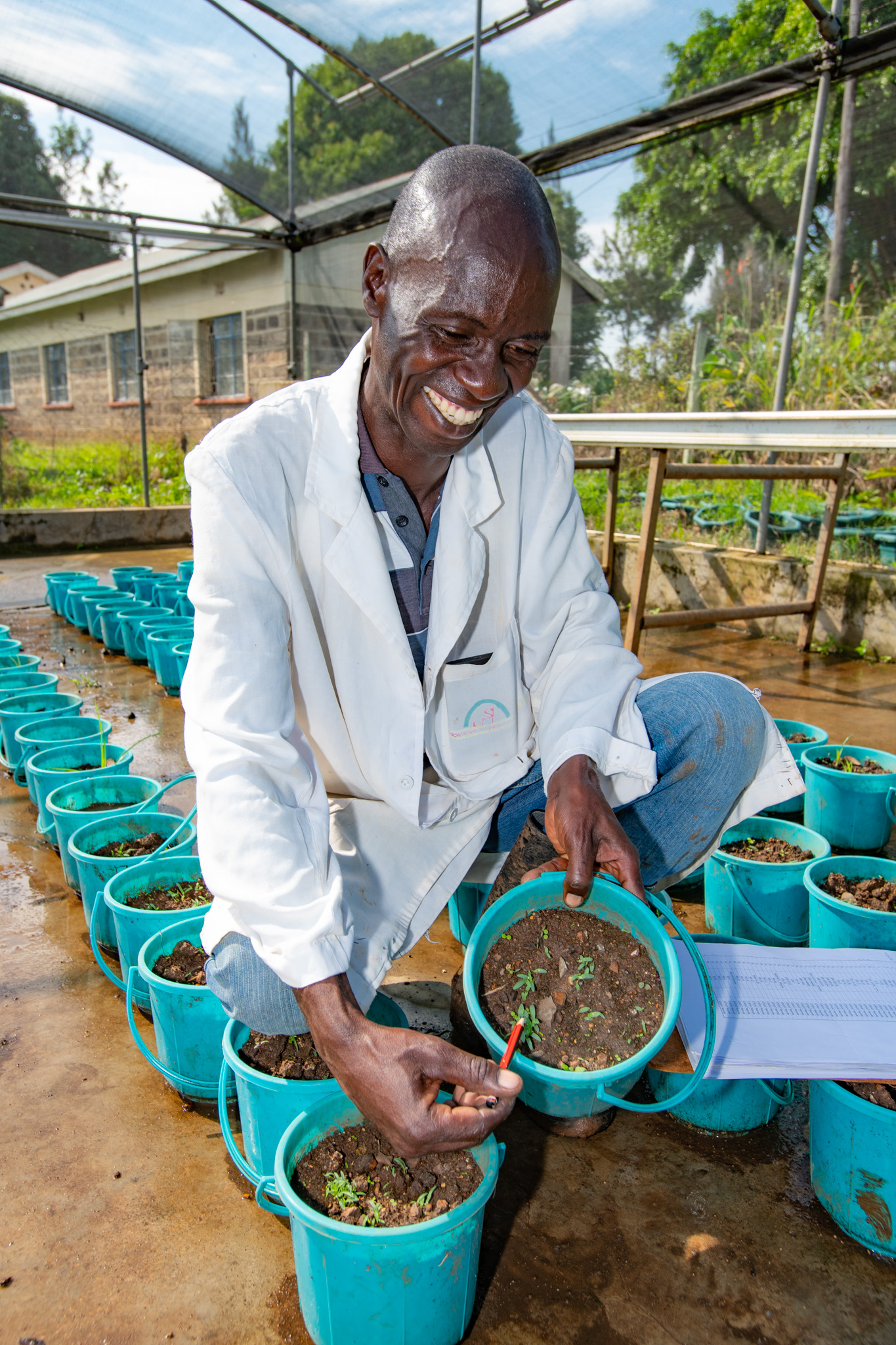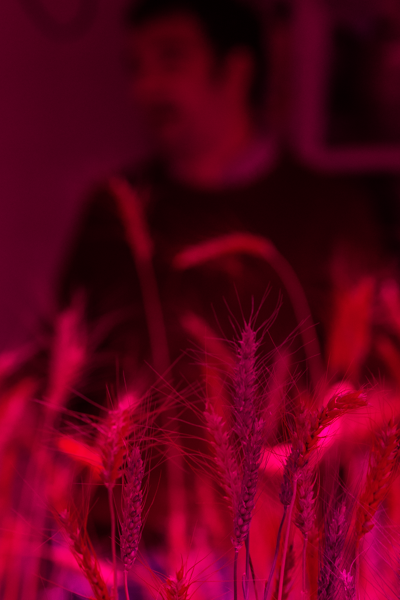A Decade of Wild Diversity
Crop wild relatives are cousins of our food crops that still grow in the wild. Many have evolved to survive tough conditions, such as drought, flooding, high temperatures or poor soils. This means they are vital sources of genetic diversity – diversity that plant breeders need as the basis of their efforts to make food crops more resilient.


Existence threatened
But many have not been collected and their existence in the wild is threatened by deforestation, expansion of agriculture, climate change and other challenges. If they disappear from the wild, the valuable genes they contain will be lost forever.
Identifying urgency
In 2011, the “Adapting Agriculture to Climate Change: Collecting, Protecting and Preparing Crop Wild Relatives” project – the CWR project, for short – set out to identify which crop wild relatives needed the most urgent attention and to see that they got it. And the project has succeeded spectacularly in this.

A diversity of crops—and partnerships
This unique project, funded by the Government of Norway, brought together genebanks, researchers, breeders, farmers, industry and others to collect, conserve, evaluate and use wild relatives of 28 priority crops that underpin food systems around the world. “A 10-year initiative like this is uncommon in today’s world of short project cycles,” said Hannes Dempewolf, Crop Trust Senior Scientist and Head of Global Initiatives. “But without this long-term planning and funding, we would not have been able to achieve a fraction of what we did.”
In its first phase, the project and its partners collected, cataloged and conserved more than 4,500 seed samples of 321 species of crop wild relatives of these globally important crops—diversity that otherwise might have been lost forever. “Before we started, some of these crops had almost no wild relatives in genebanks,” said Ben Kilian, leader of the Crop Wild Relatives Project.
“But collecting is not easy, especially when some of the wild relatives can be so difficult to find and identify, and capacity building in collecting skills was a major focus in the early years,” said Michael Way, Conservation Partnership Co-ordinator at the Millennium Seed Bank, Kew.
All told, Kew gave hands-on training to 174 participants from the 25 national partners in seed collecting, cleaning, drying and in making herbarium specimens. In addition, they provided country- and species-specific collection guides and equipment kits to facilitate seed processing.

Dennis Odhiambo Omanje, Project Technician at KALRO/CIMMYT facility screenhouse inspecting germination in the screening for Striga resistance trial at Kibos. Photo: Michael Major/Crop Trust
Not just seeds
But it is far more than just collecting and conservation. The project and its partners have systematically evaluated many of these accessions, screening them for traits such as disease and pest resistance, heat and drought tolerance and nutritional qualities, identifying new resources in breeders’ toolboxes in their efforts to future-proof our food supplies in the face of climate change.
“We have had some fascinating, and surprising, results from the evaluation of crop wild relatives under the project,” said Kilian. Take the example of drought tolerance. Work on sorghum in Kenya found useful sources of drought tolerance among wild relatives and landraces—or farmer varieties—in genebanks, and studies on wild carrots in Bangladesh and Pakistan identified plants with heat and drought tolerance. But work on sweetpotato found that cultivated varieties have greater drought tolerance than the crop’s wild relatives.
These and similar studies conducted by partners in the Crop Wild Relatives Project have opened up possibilities of using wild relatives in breeding programs to broaden their genetic base and incorporate genes for traits that had been lost over the millennia since these crops were domesticate. And project partners have grasped these opportunities with alacrity.
From genebank to the field, via pre-breeding
“Our project partners have been using these crop wild relatives in pre-breeding efforts—crossing wild relatives with domesticated varieties to introduce genes for useful traits such as disease and pest resistance, as well as heat and drought tolerance,” said Kilian. “This is a vital step in putting the valuable traits of the wild relatives into the hands of breeders and farmers,” he continued.
“Many crop wild relatives have useful traits—such as salinity tolerance—but they also have traits that we don’t want. Take eggplant, for example—some of the wild relatives have extremely spiny stems—not good for the farmer—while many produce bitter, inedible fruits. Pre-breeding crosses these wild relatives repeatedly with domestic varieties until the breeder has a plant with the best characteristics of both the wild relative and the domesticated variety. This is challenging and time-consuming work, but our project partners have developed CWR-derived lines for 19 crops,” notes Kilian. For example, ICARDA and its partners in Ethiopia, Lebanon, Morocco and Senegal have generated some 500 CWR-derived elite lines of durum wheat, barley and lentil.
All of these CWR-derived materials are feeding into breeding programs, and some are even being taken up already by farmers. “Some crops, such as rice, alfalfa, durum wheat and potato have far exceeded our expectations and new varieties incorporating traits from their wild cousins are already growing in farmers’ fields, or will be very soon” said Kilian.
Related actions, such as the seed-sharing scheme set up to support uptake of the CWR-derived variety Zhongcao No. 3 in Inner Mongolia, China, have also had considerable impact. “The scheme marks the first successful commercialization of an alfalfa cultivar in this region, with previous attempts failing to reach subsistence farmers in Inner Mongolia due to restrictions in seed production and distribution,” said Alan Humphries, leader of the alfalfa pre-breeding project in Australia. “Through this project, there are now more than 1,500 new farmers growing the cultivar for meat, wool and seed production.” Similarly in Chile, CWR Project partner INIA (Institute for Agricultural Research) has worked with more than 300 farmers to plant alfalfa fields and extend knowledge of best practice methods. INIA trained more than 1,000 people in best practices for growing alfalfa in the region.
For me, the CWR Project is a milestone. We’ll be talking about this project ten, twenty years from now, saying: ‘Remember when this was put in place? That was the beginning of something.’ And that’s how the CWR Project should be seen.

Pre-breeding potatoes at the International Potato Center. Photo: Michael Major/Crop Trust
Cutting edge technologies
“This project is using exciting new methods and tools like speed breeding and genomics to revolutionize the breeding of improved varieties of neglected crops. Doing so will get climate-smart crops into the hands of smallholder farmers more quickly,” notes Kilian.
“Speed breeding” is an approach that grows plants in greenhouses under artificial lighting for up to 22 hours a day and helps plants mature more quickly, with up to six “crops” of wheat a year. This shortens the time taken for an initial cross to become a variety ready for farmers’ fields from 12 years to only 5 years. Speed breading has already been used with durum wheat, barley, chickpea, lentil and grasspea.
“It used to take six to seven years to breed a new grasspea variety, or up to 12 years when wild relatives are used as parents,” says Shiv Kumar Agrawal, who leads ICARDA’s Food Legumes Program. “But by increasing the hours of light and controlling the temperature, the plant completes its growth cycle faster. That means we can grow more generations per year, and a new variety can be ready for farmers’ fields in roughly five years.”
Recent advances in gene sequencing and mapping have been used to develop new populations of sorghum using wild relatives of sorghum and local varieties collected from across Africa. These 13 populations—comprising more than 1,200 “lines”—have been mapped with more than 42,000 “markers.” These identified markers will help guide breeders towards genes for characteristics such as drought, heat tolerance, disease and pest resistance, greatly facilitating breeding efforts.

Speed breeding wheat at ICARDA. Photo: Michael Major for Crop Trust

Building capacity
From the beginning, the project offered training in collecting and conserving seeds, pre-breeding methods, developing quality management systems for genebanks and comprehensively managing the data that accompanies this diversity. By mid-2021, more than 13,000 people from 71 countries had benefited from the training, including farmers, extension agents, genebank staff and others.
“Training farmers in pre-breeding activities—especially in the selection of the plants that best meet their needs—is a unique feature of the project, linking genebanks to end-users,” said Benjamin Kilian, CWR Project coordinator. “And we are making sure that we include both men and women, because women and men often have different perceptions of what is important, and we need to capture both.” And the project’s results have shown the benefits, with new varieties of rice, potato, alfalfa and durum wheat among the success stories.
“Our partners are at the front lines of climate change adaptation and mitigation; they see how fast natural environments are disappearing, they’ve documented how sturdy and valuable the wild cousins of our crops are, and they know what needs to be done to confront this climate emergency,” said Kilian. “As our partners expand their technical abilities, skills and know-how, they become stronger professionals. Beyond the seeds collected or the countless crosses made to climate-proof our crops, this is the unseen, added value that the CWR Project brings.”
The project has also contributed to the development of communities of practice around crop wild relatives in different regions. “National genebanks can be relatively isolated,” said Janny van Beem, the Genebank Quality Management Specialist at the Crop Trust. “Once the CWR Project created the space for them to meet regularly, genebank staff had the opportunity to get to know each other and discuss the challenges that they all face. This has led to an increase in communication, including sharing of documentation and site visits; an improvement of operations is inevitable when information and experiences are pooled in this way.”
